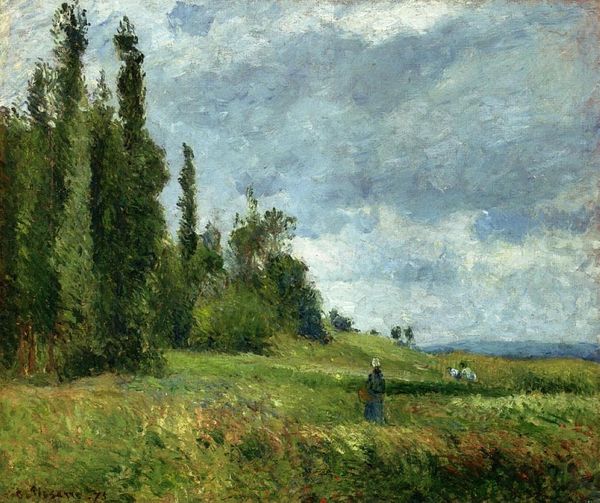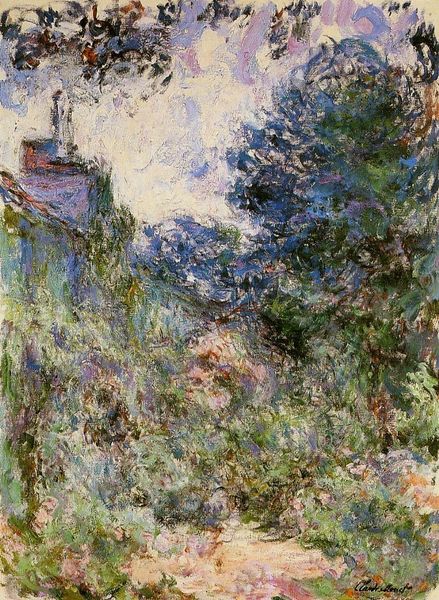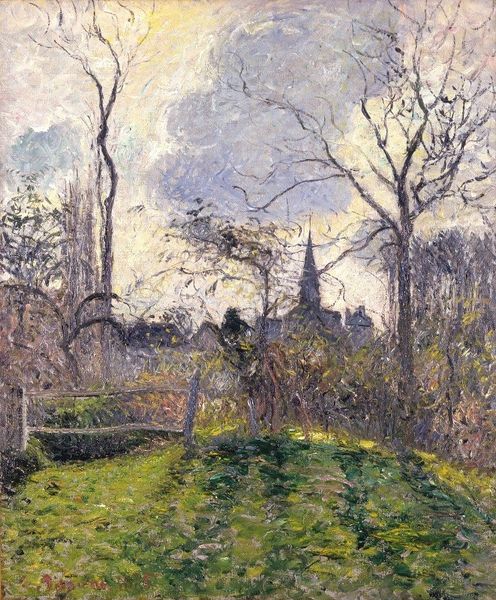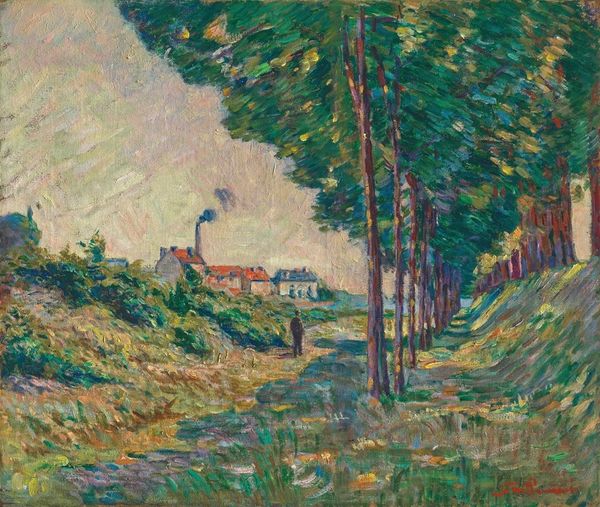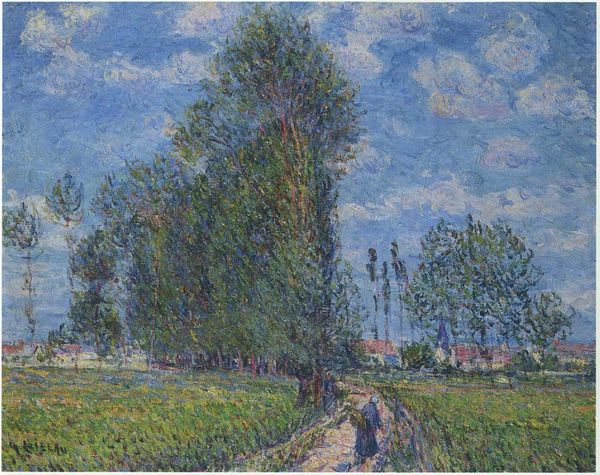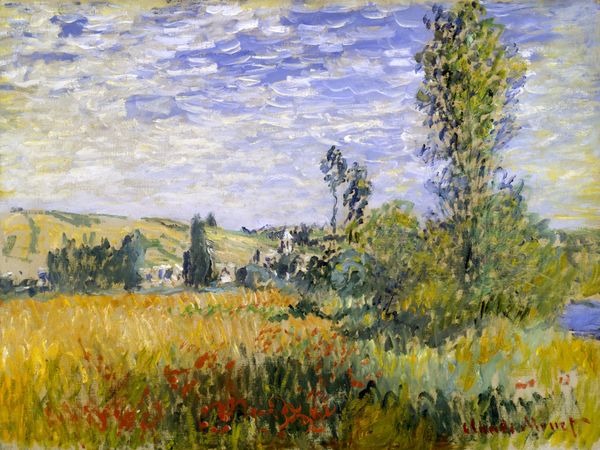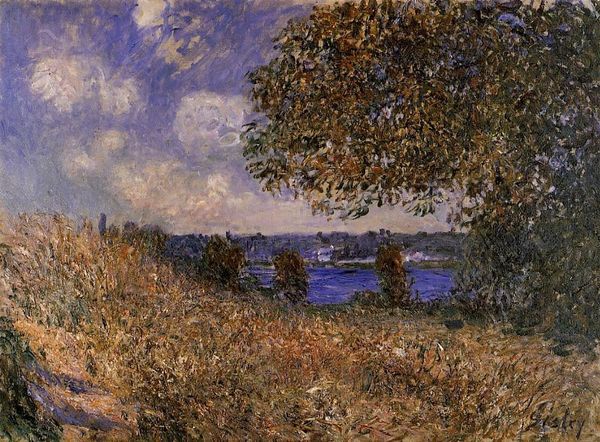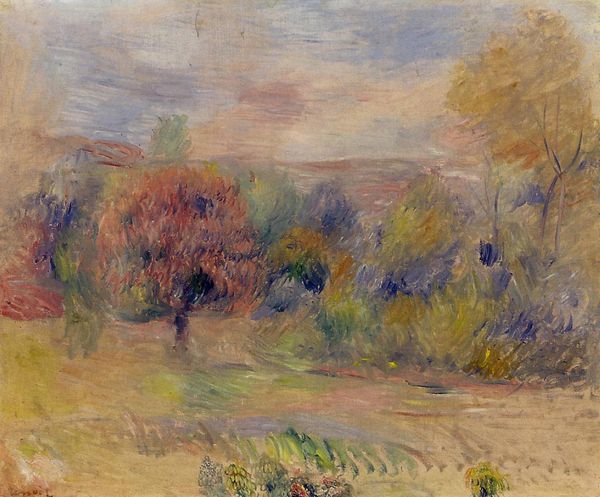
painting, plein-air, oil-paint
#
painting
#
impressionism
#
impressionist painting style
#
plein-air
#
oil-paint
#
landscape
#
house
#
impressionist landscape
#
oil painting
#
building
Dimensions: 38.1 x 55.88 cm
Copyright: Public domain
Curator: Alfred Sisley captured this vista in 1879; it’s called "Station at Sevres". Editor: My immediate reaction is how evocative this landscape feels. There’s a distinct lack of harshness—the softened lines create a somewhat tranquil impression. Curator: Observe how Sisley's orchestration of color facilitates this response. Notice how he uses light, feathery brushstrokes of yellows, blues, and greens. The composition itself invites us in with a diagonal recession toward the building, carefully framed by organic shapes. Editor: But what are we really looking at? It presents a certain picture of technological 'progress' alongside rural France. Smoke billowing near a rural field; note the people seem to occupy different strata in the frame, subtly marking class distinctions in a rapidly changing landscape. Curator: The artist's command of plein-air technique allows us to scrutinize every atmospheric detail: the gradations in the sky and the way light impacts form. Editor: Yes, it’s beautiful. But let’s think about its setting, too. Consider the environmental impact represented, a direct comment, intended or not, on the cost of the Industrial Revolution. Or, whose lives are actually improved? And at whose expense? These are relevant questions to ask even about Impressionism, yes? Curator: Absolutely. However, focusing on the compositional organization - for example, the triangular structure formed by the buildings, the trees, and the haystacks - it's clear Sisley constructs visual relationships to create coherence. The surface becomes almost tactile, doesn't it? Editor: It does, and the social and political texture deserves no less examination than its formal qualities. Bringing in feminist theory helps me consider which stories and people have been valued over others in this transition and landscape. Curator: Considering this, the painting moves beyond being simply a visual document; instead, a conversation. Editor: Precisely, about visual, social, and environmental histories. I leave with many reflections.
Comments
No comments
Be the first to comment and join the conversation on the ultimate creative platform.
